Complete Solutions to Follow-up Test of chapter STEREOCHEMISTRY of Class 12 book with complete answers and questions
| Class 12 | CHEMISTRY |
| Chapter | STEREOCHEMISTRY |
| R SHARMA | Follow-up Test |
| Number Of Questions | 81 |
| Academic Year | 2023-24 |
Constitutional isomers are iomers that differe because
01:24View SolutionStereoisomers are isomers that differ because their atoms
01:20View SolutionStereoisomers may be of different types. Stereosiomers that are radialy interconvertible by rotation around a `sigma-`bond are known as_______isomers
View SolutionThose stereoisomers that are not intercovertible by a simple rotation around a `sigma`-bond are called
View SolutionThe spatial orientation of other atoms (or groups) around carbon atoms is_____when a carbon atom is bonded to four other atoms (or groups).
01:04View SolutionConsider `CH_(2)CI_(2)` or `CH_(2)BrCI` as examples of disubstituted methanes. How many isomers would be possible in each instance if the carbon has a square planar geometry?
01:38View SolutionConsider `CHBrCIF` as an example of a trisubstituted methane. How many isomers would be possible if the geometry around carbon atom were square planar?
03:44View SolutionLight is an electromagnetic phenomenon. A beam of light consists of_______mutuall perpendicular oscillating fields
View SolutionOrdinary light oscillates in_____plane passing through the line of propagation.
View SolutionLight whose vibrations take place in only one of the infinite number of planes passing through the line of propagation is called
01:52View SolutionNicol prism used to convert ordinary light into plane polarized light consists of
01:36View SolutionOrdinary light is turned into plane-polarized light by passing it through a lens made of the material known as Polaroid. It consists of
01:26View SolutionAn optically active substance is one that________the plane of polarized light.
01:18View SolutionWhich of the following factors affect the value of `alpha_(obs)`?
(i) Solvent (ii) Temperature
(iii) Wavelength (iv) Concentration01:07View SolutionThe specific rotation, `[alpha]`, is expressed as
01:04View SolutionCalculate the specific rotation of coniine (the toxic component of poison hemlock), if a solution containing `0.75g `in `10 mL` is placed in a `1-dm` polarimeter tube and its observed rotation at `25^(@)C(D` line) is `+1.2^(@)`.
01:20View SolutionThe optical activity is the characterstic of
01:13View SolutionThe necessary and sufficient condition for a compound to be optically active is that
01:48View SolutionA carbon atom is chiral when
01:33View SolutionWhich of the following atoms can be a chiral center in a given molecular species?
(i) Carbon (ii) Nitrogen
(iii) Phosphorus (iv) SiliconView SolutionWhich of the following objects is chiral?
01:18View SolutionWhich of the following compounds possesses a stereocenter?
01:36View SolutionThe number of chiral centres present in `3,4`-dichloropentan`-2-ol` is
01:26View SolutionConsider a hypothetical planar molecule with the formula `A_(2)B_(2)X`(where `X` is the central atom). How may elements symmetry (plane of symmetry as well as centre of symmetry) does it have?
02:28View SolutionWhich of the following can not be a chiral center?
01:42View SolutionWhich of the following pairs of compounds are enantiomers?
02:45View SolutionEnantiomers have identical
01:34View SolutionWhich of the following statements in not correct?
01:34View SolutionEnantiomerism is shown by
02:25View SolutionWhich of the following capital letters is achiral?
01:02View SolutionWhich of the following is a racemic mixture?
01:52View SolutionThe process of conversion of an optically pure enantiomer into an optically inactive equimolecular mixture of `(+)` and `(-)` enantiomers is called
01:28View SolutionThe process of separating a racemic mixture into optically pure `(+)` and `(-)` enantiomers is known as
01:33View SolutionEnantiomers can be separated by means of
01:48View SolutionDextrororatory bytan`-2-ol` has a specific rotation `[alpha]_(D)^(25) =+13.52^(@)`. A sample of butan`-2-ol` shows a specific rotation `[alpha]_(D)^(25)=+6.72^(@)`. Calculate the enantiomers excess (or optical purity) of the sample?
01:48View SolutionDextrororatory `alpha-`pinene has a specific rotation `[alpha]_(D)^(20) =+51.3^(@)`. A sample of `alpha-`pinene containing both the enantiomers was found to have a specific rotation value `[alpha]_(D)^(20) =+30.8^(@)`. The percentages of the `(+)` and `(-)` enantiomers present in the sample are, respectively,
02:24View SolutionThe specific rotation of a pure enantiomers is `+12^(@)`. What will be its observed rotation if it is isolated form a reaction with `20%` racemization and `80%` retention.
01:29View SolutionAccording to `CIP` sequence rule, the correct arrangement in order of decreasing priority is
02:24View SolutionWhich of the following structures has the `R`-configuration at the chiral centre?
01:34View SolutionWhich of the following structures has the `S-`configuration at the chiral centre?
03:19View SolutionWhich of the following structures has the `D`-configuration
02:28View SolutionWhich of the following assignment of priorities is not correct?
03:49View SolutionWhich of the following ligands has the highest priority according to `CIP` sequence rule?
01:48View SolutionWhich of the following designations are correct for the naturally occuring amino acid, proline?
01:43View SolutionConsider the following structures `(A),(B),(C )` and `(D)`.

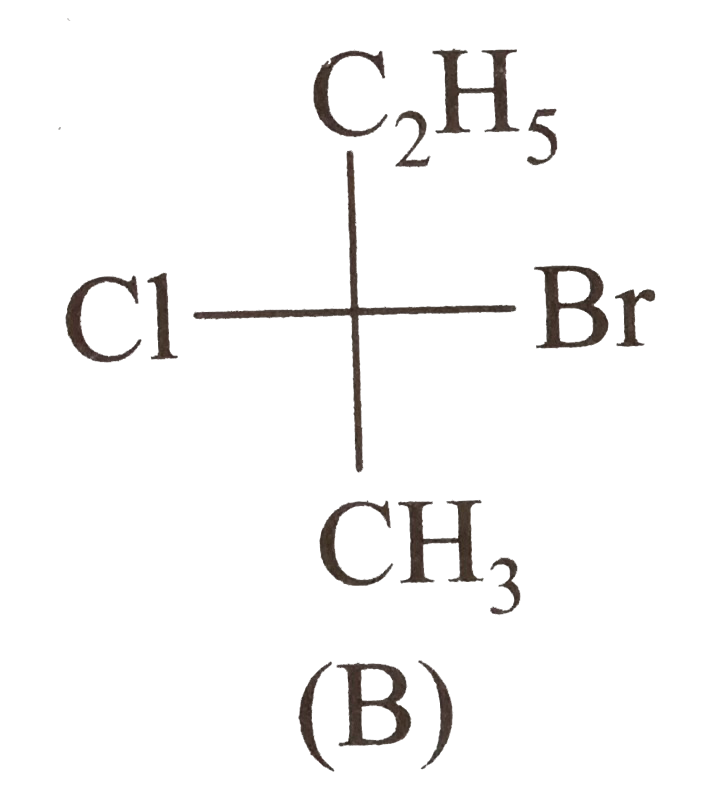
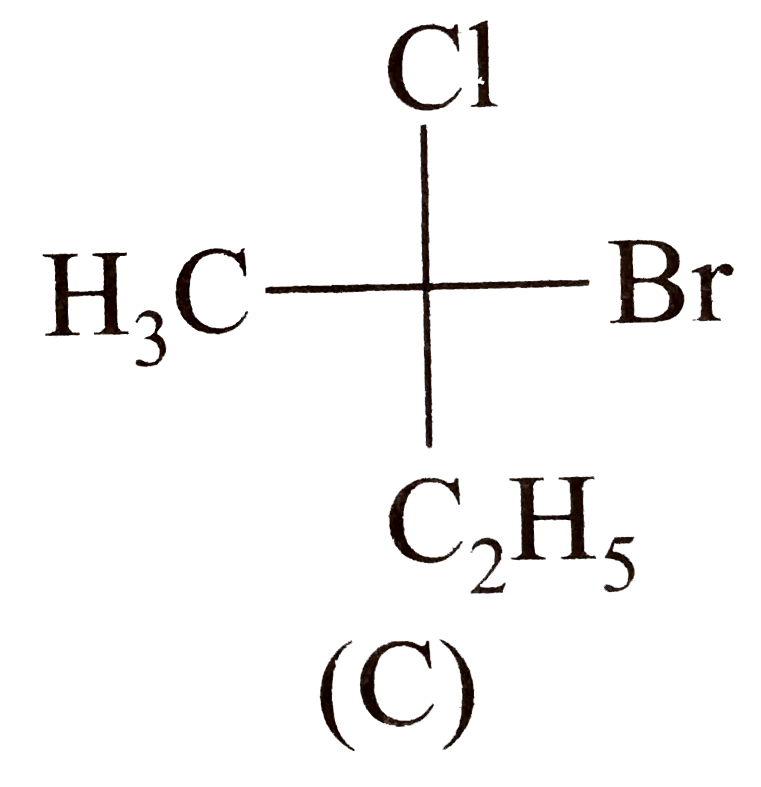
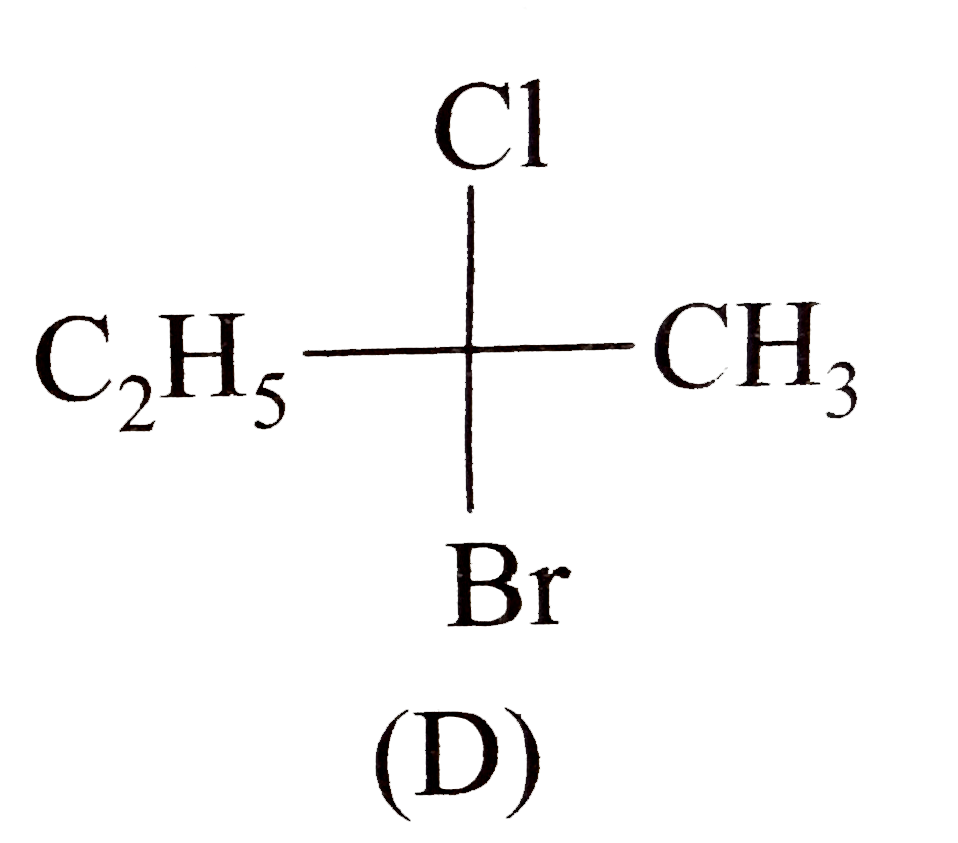
Which of the following statements is not correct?02:43View SolutionThe correct `IUPAC` name of
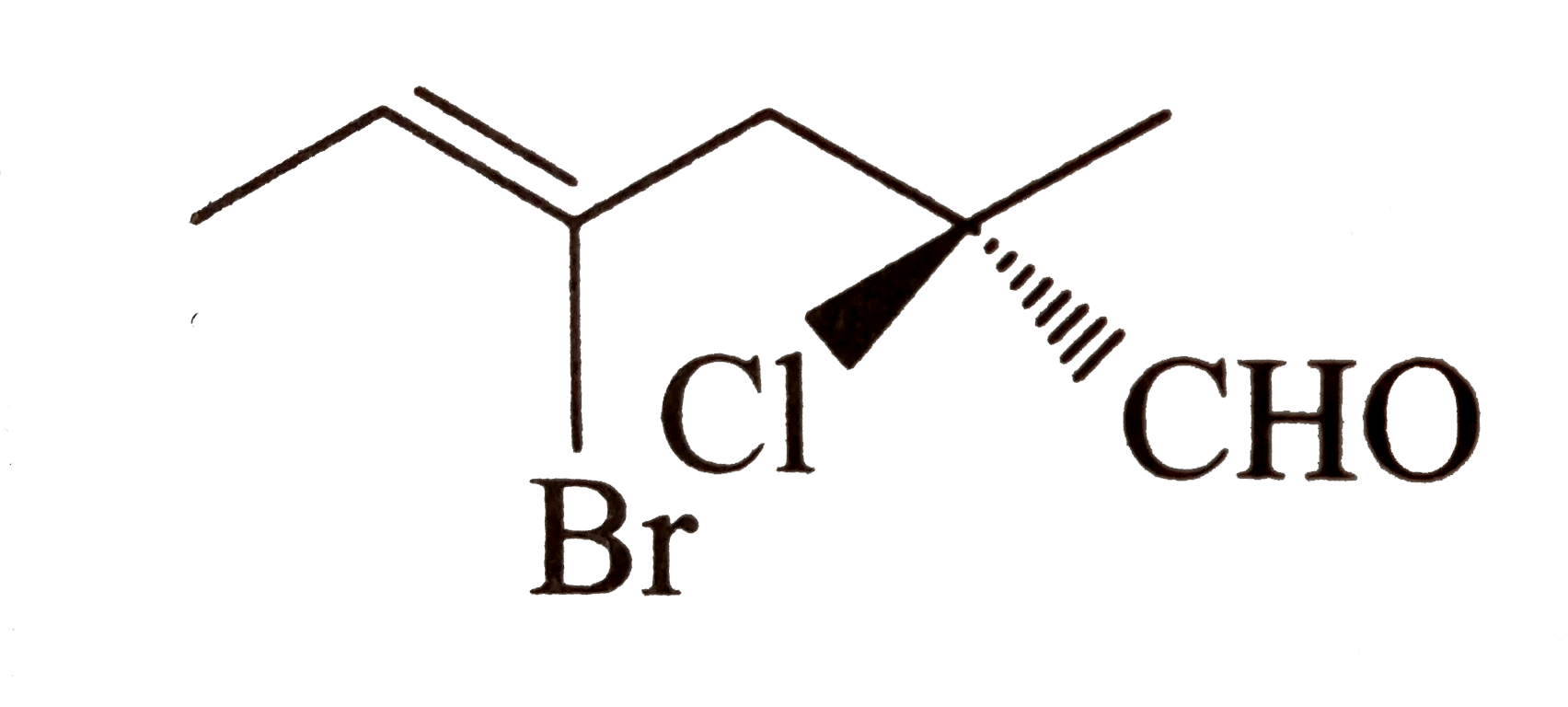 is 03:07View Solution
is 03:07View SolutionThe interchange of two groups `(Br`and `CH_(3)` at the chiral centre of the projection formula `(A)` yields the fromula `(B)`,while the interchange of another set of two groups `(C_(2)H_(5)` and `CI)` of `(A)` yields the projection formula `(C )`.

Which of the following statemenets is not correct about the structures `(A),(B)` are `(C )`?02:34View SolutionWhich of the following pairs of structures represent enantiomers?
02:39View SolutionHow many steroisomers are possible for `3-`chloropentan`2-ol`?
02:02View SolutionIn the configuration
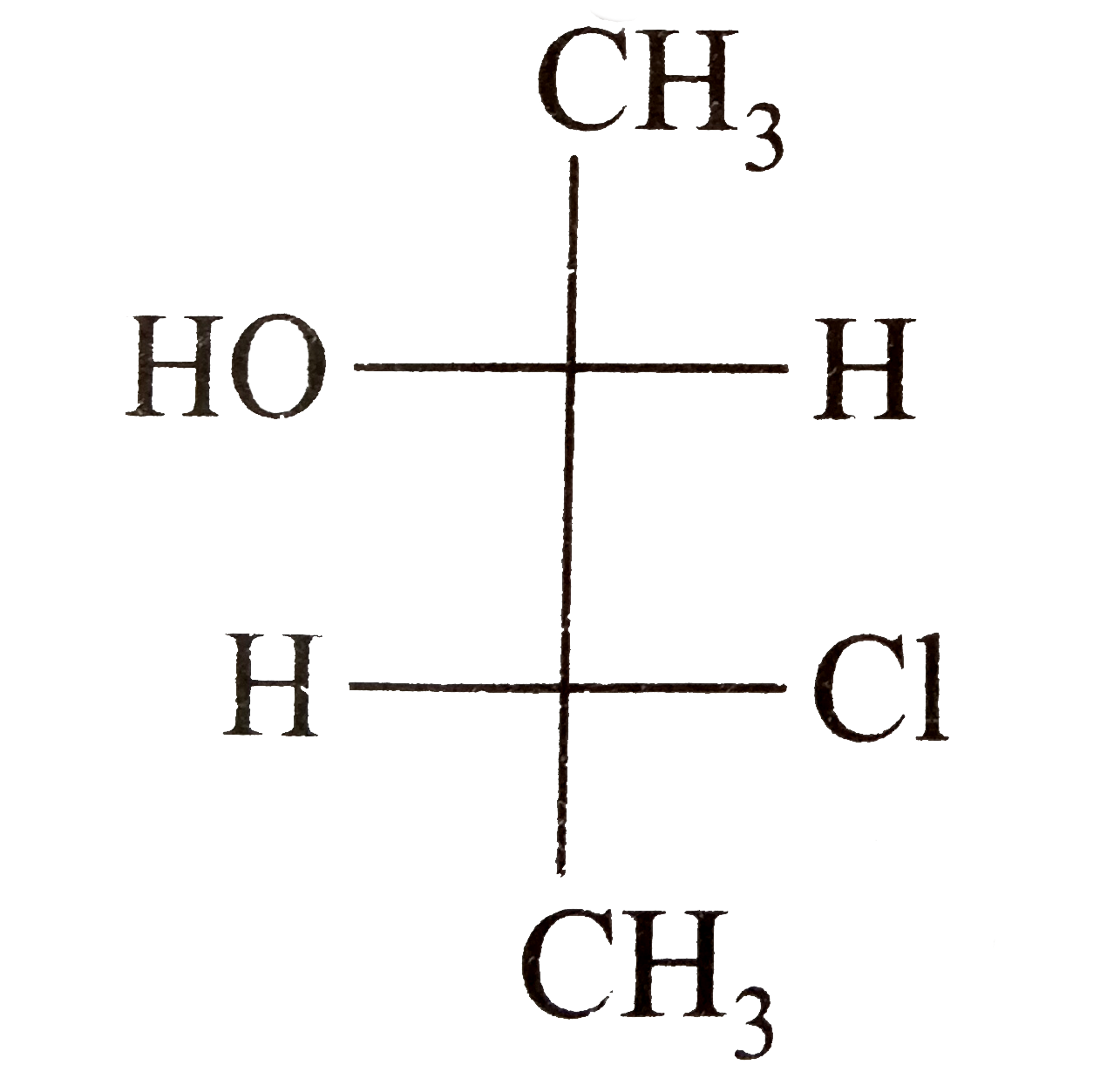
the configuration at the chiral centres are01:40View SolutionHow many steroisomers of butane`-2,3-`diol,
`CH_(3)CH(OH)CH(OH)CH_(3)`, are possible.02:21View SolutionWhich of the following compounds may posses a meso stereosiemer?
02:30View SolutionMeso butane`-2,3-`diol is optically inactive because
01:57View SolutionWhich of the following compounds are known as threose and erythrose?
01:18View SolutionWhich of the following configuration represents an erythrostereoisomer?
01:29View SolutionHow many optically active isomers of `2,3-`dibromosuccinic acid are there?
02:44View SolutionHow many forms to tartaric acid exist in neture?
01:15View SolutionHow many enantiomeric forms are possible for `2,3,4-`tri-hydroxypentanedioic acid?
04:11View SolutionWhich of the following conformations of meso-tartaric acid has a centre of symmetry?
01:22View SolutionWhich of the following compounds does not have diastereomers?
02:20View SolutionWhich of the following statements is not correct?
02:15View SolutionConsider the following compounds

The correct statement about the compounds `(A),(B)` and `(C )` is02:04View SolutionWhat is the sterostructure of the monochlobutanes obtained form the free radical chlorination of butane?
(i) `(+)-2-`Chlorbutane
(ii) `(-)-2-`Chlorobutane
(ii) `(+-)-2-`Chlorobutane
(iv) Achiral`-1-`Chlorobutane02:03View SolutionIsopentane is allowed to undergo free-radical chlorination and the reaction mixture is separated. How many optically active fractions of formula `C_(5)H_(11)CI` would you expect to collect?
02:16View SolutionConsider the reaction
`{:((R)-CH_(3)CHICH_(2)CH_(3)+^(137)T^(-),rarrCH_(3)CHICH_(2)CH_(3),,,),(alpha_(obs)=-15.90^(@),"containing" 2%137T^(-),,,),(,alpha_(obs)=-15.26^(@),,,):}`
The percentage of racemic from in the product isView SolutionWhich of the following reactions occurs wiyh reacemization?
01:11View SolutionWhich of the following compounds exsits as a nonresolvable racemic mixture?
01:27View SolutionWhich of the following compounds will undergo racemization on prolonged digestion of either of its enantiomers with a dilute acid or base?
01:01View SolutionWhat happens when an optically pure `(+)-1-`chlorenthylbenzne `(C_(6)H_(5)CHCICH_(3))` is treated with `SbCI_(5)`?
View SolutionWhich of the following reaction could safely be used to relate configuration?
(i) `(+)-CH_(3)CH_(2)CHOHCH_(3)overset(Na)rarr`
`CH_(3)CH_(2)CH(ONa)CH_(3)overset(C_(2)H_(5)Br)rarr C_(2)H_(5)-O-CH(CH_(3))CH_(2)CH_(3)`
(ii) `(+)-CH_(3)CH_(2)underset(O)underset(||)C-.^(18)OCH(CH_(3))C_(2)H_(5)+OH^(-)rarrCH_(3)CH_(2)COO^(-)+CH_(3)CH_(2)CH^(18)OHCH_(3)`
(iii) `(+)-CH_(3)CH(OH)CH_(2)Br+NaCNrarr CH_(3)CH(OH)CH_(2)CN`
(iv) `(-)-C_(6)H_(5)CH(OC_(2)H_(5))CH_(2)OH+Hbrrarr C_(6)H_(5)(OC_(2)H_(5))CH_(2)Br`View SolutionWhich of the following is true for the given reaction?
`overset( :overset(..)O:^-)overset(|)((S)-C_2H_5CHCH_3+CH_3I)rarroverset(OCH_3)overset(|)C_2H_5CHCH_3+I^(-)`View SolutionWhich of the folloiwng statements is true?
View SolutionWhich of the following statements is false?
(i) `A D` enantiomers rotates the plane of polarized light to the right and an `L` enantiomer to the left
(ii) Conversion of an erythro to a threo stereoisomer always occurs by inversion at one chiral `C`.
(iii) A racemate can be distinguished from a maso or an achiral compound by an attempted resolution
(iv) Racemizatio of an enantiomer can only occur by breacking of a least one bond to the chiral center
(v) A reaction catalyzed by an enzyme always gives an optically active product.View Solutioncis-But`-2-`en on reaction with `Br_(2)` in `C CI_(4)` produces mainly
View Solution`1,2-`Dimethy`1`cyclohexene reacts with `HBr` in `C CI_(4)` to form mainly
View SolutionAddition of `HBr` to but`-1-`ene yields
01:48View SolutionCyclohexene on reaction with `HOCI` yields
01:27View Solutioncis-But`-2-`ene on reaction with cold dilute `KMnO_(4)` solution yields
01:19View SolutionAn alkene on reaction with `Br_(2)//C CI_(4)` produces the following products:
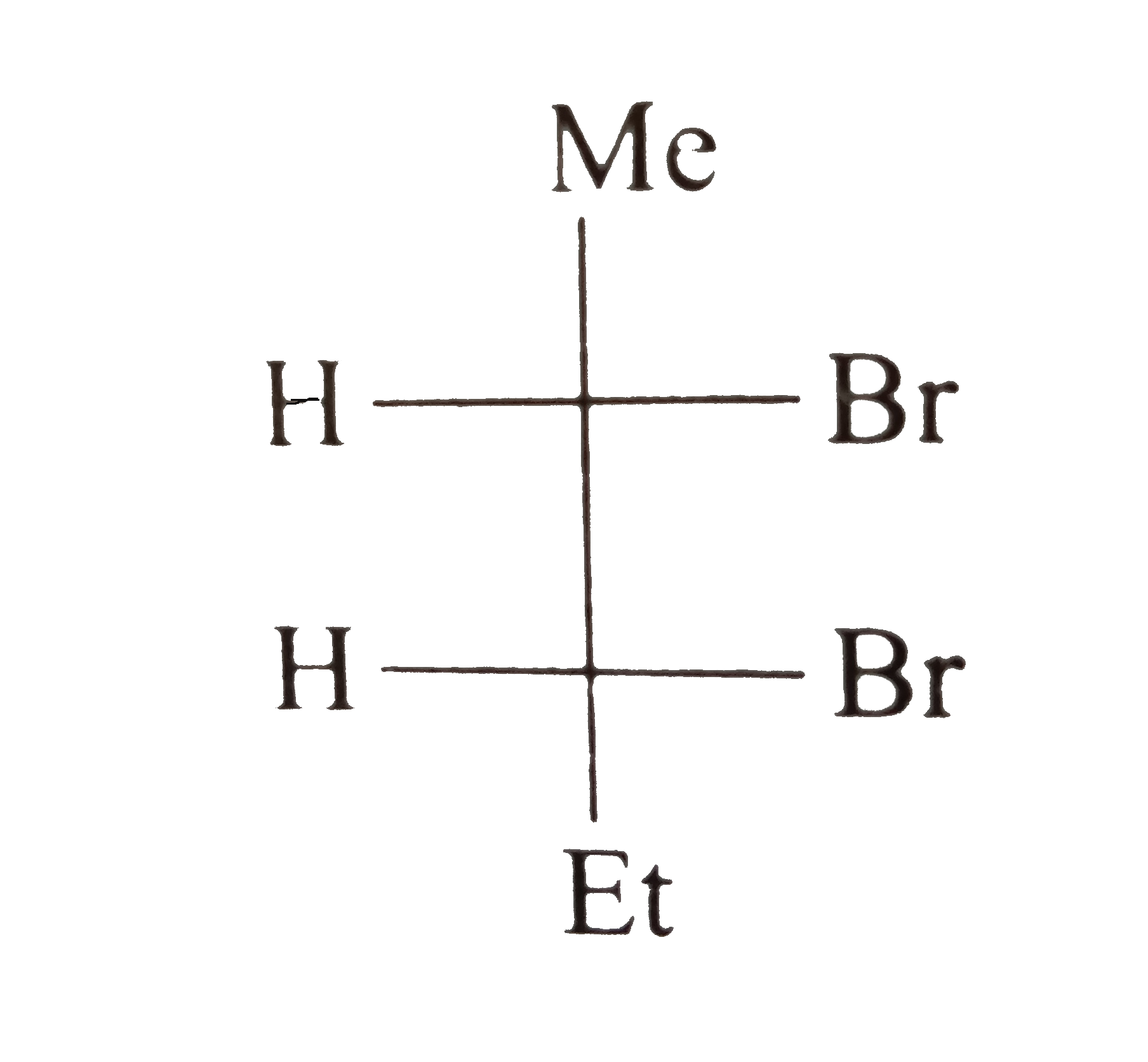
and its enantiomer in equal amounts. The alkene is01:18View Solutioncis-But`-2-`ene reacts with `D -N=N-D` to yield the major product
View Solutionmeso`-2,3-`Dibromobutane is treated with `NaI` in acetone. The mojor compound formed is
View Solution
Follow-up Test questions and complete solutions for chapter STEREOCHEMISTRY of R SHARMA CHEMISTRY (HINGLISH) of Class 12
